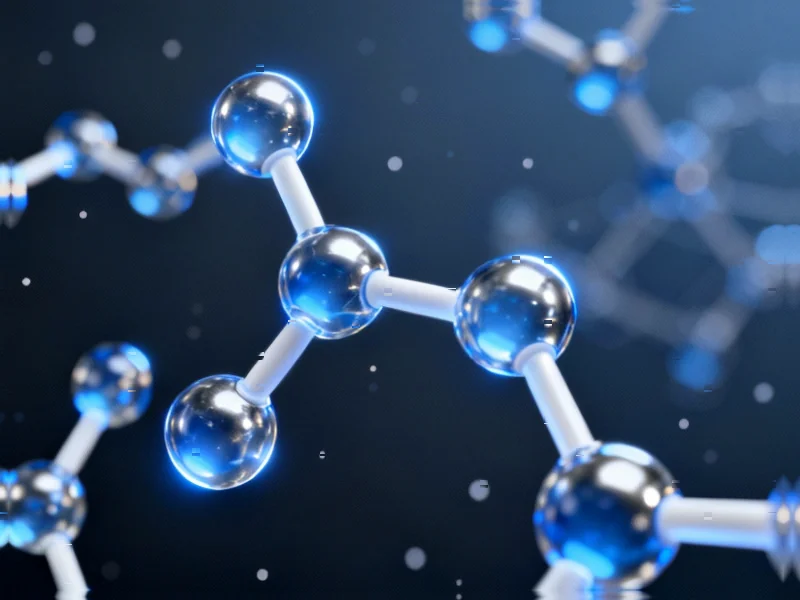Revolutionizing Polymer Research Through Standardized Machine Learning
In a significant advancement for materials science, researchers have developed PolyMetriX, an open-source ecosystem designed to standardize machine learning workflows in polymer informatics. This comprehensive platform addresses critical challenges in data standardization and model evaluation that have long hampered progress in polymer discovery. By making the framework openly available, the creators aim to foster collaboration and accelerate data-driven polymer research across academic and industrial sectors.
Table of Contents
- Revolutionizing Polymer Research Through Standardized Machine Learning
- The Data Standardization Challenge in Polymer Science
- Comprehensive Data Curation Strategy
- Advanced Featurization Framework
- Benchmarking Against Established Methods
- Expanding Applications and Future Development
- Industry Implications and Adoption Potential
The Data Standardization Challenge in Polymer Science
The polymer research community faces a fundamental obstacle: the inability to reliably compare machine learning models due to incompatible datasets. As the PolyMetriX team discovered through rigorous testing, predictive models trained on different datasets show dramatically varying performance when cross-validated. Their experiments revealed mean absolute errors ranging from 13.79 to 214.75 Kelvin when testing models across different polymer datasets.
“This variation highlights that current datasets used for training and testing ML models in polymer chemistry are fundamentally incompatible,” explained the research team. “This incompatibility severely hampers the reuse of prior work and slows scientific progress.”
Comprehensive Data Curation Strategy
PolyMetriX addresses this challenge through a sophisticated data curation approach focused initially on glass transition temperature (Tg) data. The team collected nine distinct datasets comprising 8,992 data points from various literature sources, identifying significant data quality issues including duplicated entries and unreported experimental parameters.
The platform implements a novel reliability categorization system that classifies data into four distinct categories: Black, Yellow, Gold, and Red. This system accounts for the inherent variability in polymer samples, where identical repeat units can exhibit different Tg values due to factors like chain length, dispersity, and experimental methods that are often unreported in literature.
Through this meticulous curation process, the team established 7,367 unique PSMILES-T pairs with canonicalized representations, creating what they describe as “the first robust benchmark dataset for polymer machine learning studies.”, according to recent developments
Advanced Featurization Framework
At the core of PolyMetriX lies its sophisticated featurization system, which transforms polymer structures into machine-readable formats. The platform categorizes featurizers into two main types:, according to technological advances
- Chemical featurizers that capture compositional attributes including ring structures, rotatable bonds, heteroatoms, and hybridization states
- Topological featurizers that describe structural connectivity patterns, side chain characteristics, and backbone architecture
The system introduces hierarchical featurization that analyzes polymers at multiple structural levels: full polymer, side chains, and backbone components. This modular approach provides comprehensive molecular representation while maintaining computational efficiency., according to related news
Benchmarking Against Established Methods
The research team conducted extensive validation studies comparing PolyMetriX features against established fingerprinting methods. Their evaluation revealed distinct performance characteristics:
- Morgan fingerprints perform well on structurally similar compounds but struggle with extrapolation to dissimilar structures
- PolyBERT fingerprints show moderate generalization capabilities across similarity levels
- PolyMetriX hierarchical features maintain consistent performance across varying similarity levels despite significantly lower dimensionality
This consistent performance across structural similarity levels suggests that PolyMetriX features may offer superior generalization capabilities for real-world discovery applications where novel polymers often differ significantly from training examples.
Expanding Applications and Future Development
While initially focused on homopolymers, PolyMetriX’s architecture-agnostic design enables potential extension to complex polymer systems. The platform currently implements 25 chemical featurizers and 7 topological featurizers, with plans to expand topological descriptors and incorporate 3D conformational features.
Notably, the system supports analysis of polymer-molecule interactions through dedicated comparator classes, enabling characterization of polymer-drug formulations, polymer-solvent mixtures, and composite materials. This capability positions PolyMetriX as a valuable tool for pharmaceutical, packaging, and advanced materials development.
Industry Implications and Adoption Potential
The standardization offered by PolyMetriX could significantly impact industrial polymer development by enabling reliable comparison of predictive models across research groups and organizations. For chemical companies and materials manufacturers, this represents a crucial step toward more efficient discovery pipelines and reduced development cycles., as additional insights
As the platform evolves through community contribution, it promises to become what the developers describe as “a community-driven cornerstone for the next generation of AI-driven polymer discovery,” potentially transforming how new polymeric materials are designed, tested, and brought to market.
The open-source nature of the project encourages widespread adoption and collaborative improvement, addressing a critical need in an industry where proprietary data and incompatible formats have traditionally limited collective progress.
Related Articles You May Find Interesting
- Unlocking Water Purification Potential: How Modified Lignin Transforms Nitrate R
- Seven Fermentation Techniques Transform Cow Wastewater into High-Value Agricultu
- Himalayan Glacial Lake Monitoring Breakthrough Achieved Through AI and Satellite
- Silica Sand Revolution: How Industrial Waste Transforms Aluminum Composites into
- Dual-Laser 3D Printing Technique Enhances Metal Strength and Durability in New S
This article aggregates information from publicly available sources. All trademarks and copyrights belong to their respective owners.
Note: Featured image is for illustrative purposes only and does not represent any specific product, service, or entity mentioned in this article.

